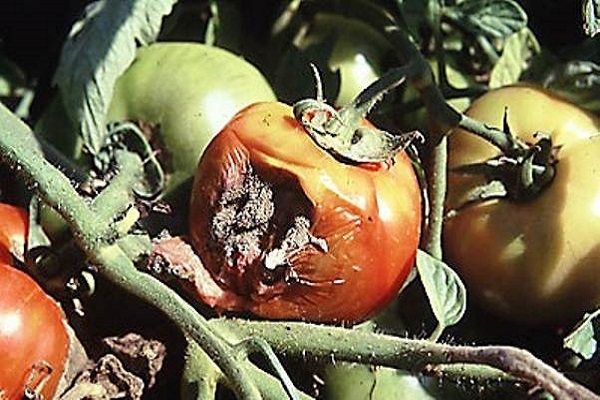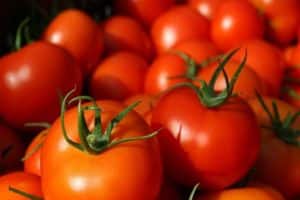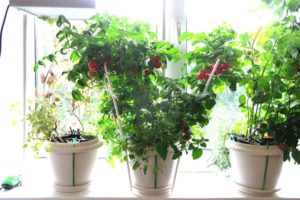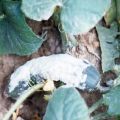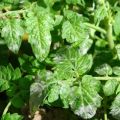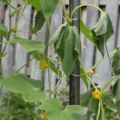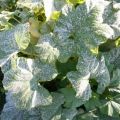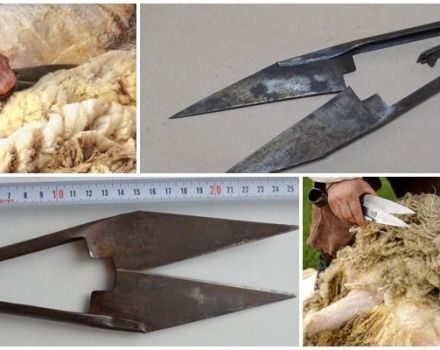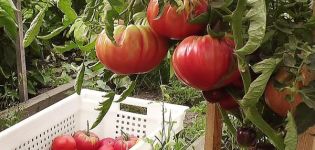Causes and treatment of gray rot on tomatoes
Tomatoes are grown in almost all summer cottages and backyards. Often summer residents are faced with cultural diseases, gray rot of tomatoes is one of them. Another name is phomosis.
Symptoms characteristic of the disease, its spread
The disease primarily affects the stems. More often, the plant is affected during the fruiting period. Gray spots appear, which are noticeable on the leaves of tomatoes and their stems. After a week, they are covered with a bloom of gray.
The disease spreads very quickly. Wet weather is favorable for its development. For 3-5 days the spot grows along the entire perimeter of the stem. In the first week, the fungus does not form spores. The development of necrosis of the cortex and blood vessels occurs inside the stem.
The leaves above the spot begin to turn yellow, and the stem, due to lack of moisture, begins to form air roots. Then the whole plant withers and disappears.
Any disease is easier to prevent than to cure later. In addition, one diseased plant is capable of infecting all neighboring plants. And this, in turn, is fraught with the loss of a large amount of the crop.
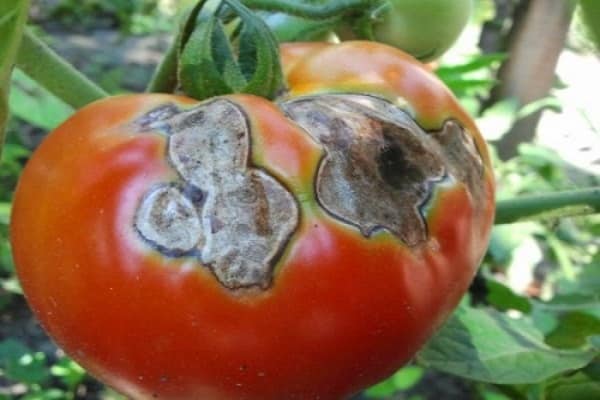
Causes of occurrence
The development of the disease begins not only from the transfer of spores downwind. The cause of rot on tomatoes is improper agricultural technology:
- Using untreated seeds. Sometimes these are self-collected seeds.
- Contaminated, untreated soil.
- Lack or excess of moisture.
- Insufficient ventilation in the greenhouse method of cultivation.
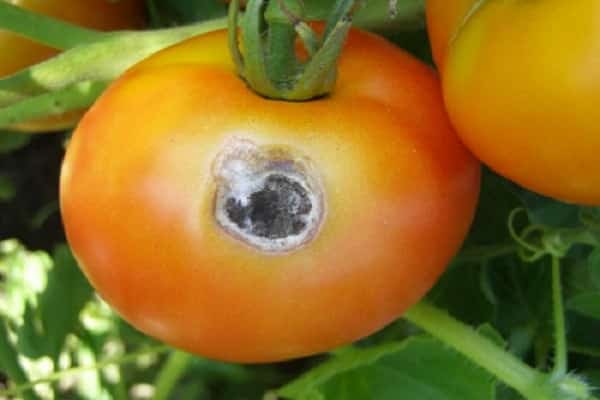
Observing the techniques and rules of planting and growing, they ensure that the plants practically do not get sick.
Rot types
In order to start effective treatment, you must correctly determine the type of rot that has affected the plants. There are several types of rot:

- Gray rot. Its external signs are noticeable immediately, spots appear on the stems, which are then covered with a gray bloom. Plants dry out quickly and disappear, infecting all neighboring bushes.
- White rot. Source of disease development, soil or compost. First of all, areas of the plant that have mechanical damage are affected. It is recommended to steam the soil in greenhouses.
- Root rot. Plants in greenhouses are affected. The disease develops during the entire period of plant growth. A distinctive feature, the root collar turns black, and the root of the tomatoes itself.
- Brown rot. The infection affects areas around the peduncles. Small spots form on the fruits, however, everything inside rots. The source of the spread of the disease is fertilization of the soil with fresh manure.
- Top rot. It spreads very quickly. Symptoms of its development, the appearance of spots on the fruits.Rot spreads on tomatoes in the greenhouse, and in a short period of time destroys the entire crop.
All types of rot mainly affect the plants in the greenhouse. Therefore, it is recommended to ventilate the greenhouses well, water in moderation and on time. To cultivate the land in greenhouses from autumn.

How to treat the disease?
A diseased plant should be treated with one of the modern drugs to combat gray rot. These include:
- "Topsin M".
- Bayleton.
- "Euparen Multi" 1.5-3 kg per hectare.
- Use of sodium humate.
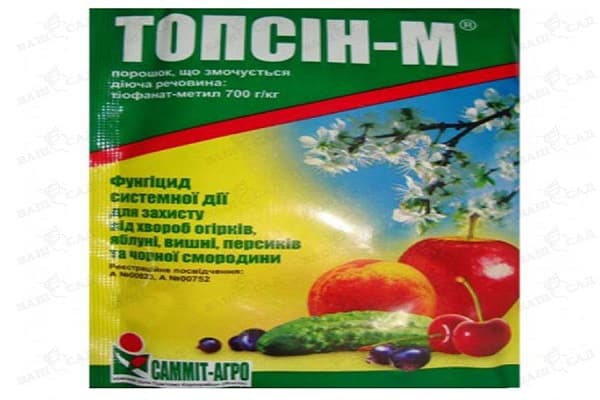
It is necessary to process tomatoes several times per season. Timely preventive methods taken will help protect plants from infection.
The breeders have not developed a variety that is resistant to rot. Therefore, summer residents are trying to pay more attention to prevention:
- Processing is carried out in May, all damaged plants are subjected to it. Re-processing after 14 days.
- In July, they process partially, only those tomatoes that the summer resident suspects of non-compliance with the norm.
- In August. Continuous processing is carried out, be sure to repeat after 14 days.

To consolidate the result, they are treated with a growth stimulant.
The affected areas are treated with a special paste. They do which, on their own, by connecting:
- 10 liters of water.
- 300-350 g of CMC glue.
- 30-40 g of fungicide.

Adding chalk results in a paste state. Coat the damaged areas, capturing 2-3 cm of a healthy stem. The likelihood of new spots appearing after 2 weeks. It is recommended to re-examine the infected tomato.
Trichodermin suspension is used as a preventive measure. It is used for processing sections after removing stepsons and leaves. Spraying is recommended for bulk pruning. The best time for the disinfection procedure is a clear day, the bushes should dry out.

Preventive measures
It is very difficult to cure rot on tomatoes, therefore, measures are taken to exclude its occurrence:
- They comply with agronomic requirements for growing.
- They feed the plants competently by combining fertilizers.
- The planting material is hardened and disinfected.
- They process soil and substrates.
- They are planted at an optimal distance.
- Observe the prescribed indicators of humidity, lighting and temperature.
- Use growth stimulants.
- Set up drip irrigation.
- The beds are mulched.
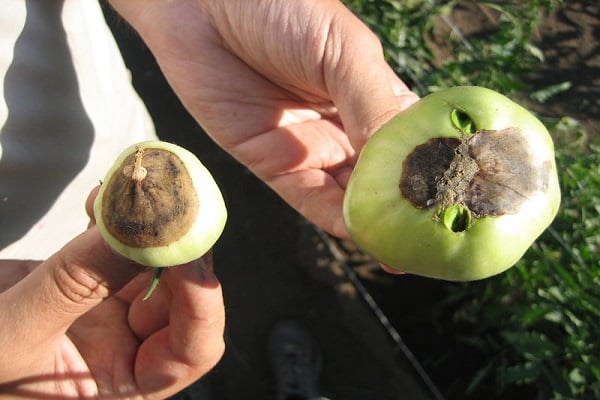
For the effectiveness of the measures taken, their timely application is important. Being late greatly reduces their effectiveness.
When the first signs of the disease appear, the greenhouse should be ventilated more often. Thus, reducing the level of humidity in the air.
The virus spreads by air. Plants that have wounds inflicted during harvesting or other events are especially susceptible to its influence. When pinching, the instrument must be sharp; the procedure is carried out in dry weather. All plant residues are immediately removed.
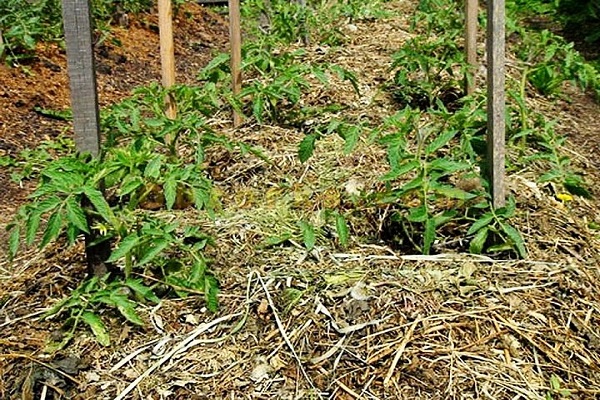
Gray rot on tomatoes is sometimes mistaken by summer residents for didimella or fusarium. Therefore, control measures are postponed, the consequences are then much more difficult to correct. Treatment of stains with a special fungicidal ointment, is able to protect plants from further development of the disease.
Any protective solution will show itself better at the initial stage. To do this, tomatoes are tested for symptoms every few days. Timely determination of the type of rot will save the bush itself and other crops on the site from death.
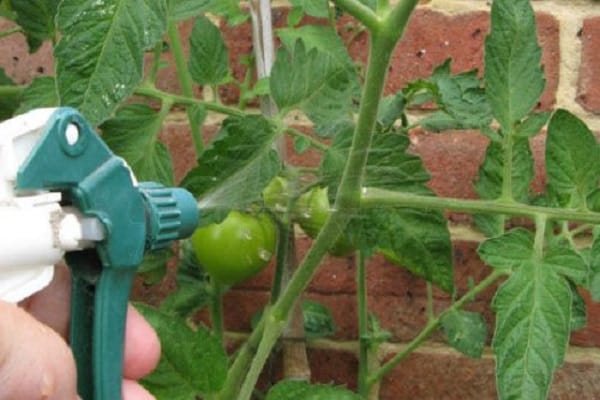
Plants that help neutralize infection
In addition to processing the greenhouse in the winter, the beds are planted with the following plants:
- Mustard.
- Calendula.
- Marigolds.
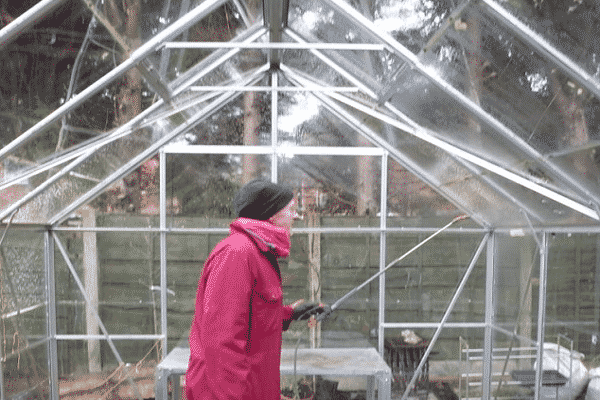
The peculiarity is that they emit substances that prevent the disease from spreading further.
Folk remedies
Some summer residents categorically do not accept the use of chemistry on the site, for this they are looking for ways to fight based on natural products:
- The soap is mixed with copper, the bushes are sprayed.
- 5 g of copper sulfate is diluted in 10 liters of water.
- 80 g of baking soda is dissolved in 10 liters of water.
- 1% boric acid solution is used for spraying bushes.
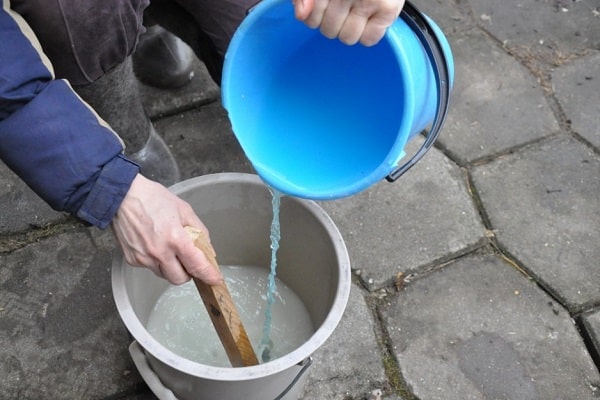
Each summer resident has the right to choose for himself how to treat damaged tomatoes. An effective way is found over the years.
An important condition for carrying out any treatment for gray rot on tomatoes is the use of several methods in combination. This is the only way to achieve the maximum result. The main advice of the article is, it is better to prevent the disease than to cure it later.
